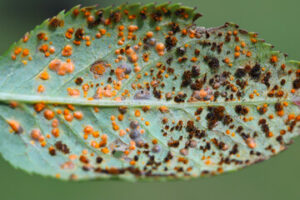Metal railing has redefined stairway design in modern architecture. It blends strength, style, and precision. Stairways no longer serve as mere pathways between levels. They now become focal points within spaces, showcasing artistic and structural design.

The return of metal in stairway features shows a shift toward industrial elegance. Architects are choosing materials like steel and aluminum. These offer durability and clean geometry. Metal allows intricate design without compromising safety. Keep reading the article below to learn more about Architecture Stairway Metal Railing.
Homeowners and developers want designs that feel open but secure. Metal railing fulfills this demand well. Its thin lines provide safety while maintaining visibility. This enhances light flow and spatial depth.
Customization options for stairway railing are also increasing. Designers can request patterns that match unique interiors. Technology like laser cutting makes this easy. It also supports rapid prototyping and material optimization.
In some projects, the railing becomes the centerpiece. Floating stairs with minimalist railings command attention. Brushed metals reflect light in subtle ways. These designs elevate the room’s character without being loud.
Architectural metalwork also plays with form and void. Vertical bars create rhythm and repetition. Curved metal railings soften sharp angles in minimalist homes. The result is harmony between the built form and human movement.
Innovation in coating methods improves resistance to wear. Powder-coating adds color without compromising texture. Some finishes mimic bronze or matte textures. This variety allows architects to match existing materials and color palettes.
Stairway metal railings serve structural and emotional functions. They guide users while reinforcing spatial hierarchy. In multi-level homes, they link different zones together. The railing becomes an architectural thread.
Public buildings also benefit from robust railing designs. Strong handrails meet safety codes and aesthetic demands. They must endure constant touch, weight, and weather. Metal responds well to all these pressures.
In retail or hospitality spaces, stair railings add luxury. Metal details pair with wood, concrete, or glass. They complement a variety of finishes. They also help establish brand identity in commercial designs.
Urban spaces use metal railing for safety and visual order. Parks, overpasses, and civic buildings feature elegant barriers. These reduce risk while elevating style. Even basic stairways can inspire when treated thoughtfully.
Designers often blend metal with other materials for contrast. Wood brings warmth to cold metal. Glass introduces transparency and reflects movement. This material layering creates tactile and visual richness.
Cultural inspiration also enters stairway design. Some railings echo historical ironworks or ethnic patterns. Metal’s flexibility makes such tributes possible. These details preserve heritage while embracing modern forms.
Functionality remains central despite artistic ambition. Metal railings need proper height and spacing. They must resist corrosion and deformation. Maintenance ease is a growing concern for property managers.
Many architects are designing for long-term relevance. Metal railings offer timelessness compared to trend-driven materials. Their clarity suits both classical and avant-garde styles. This makes them a safe design investment.
Smart homes may feature sensors embedded in stair rails. Lighting strips can highlight edges or steps. Metal provides a stable base for such integration. It merges traditional strength with tech convenience.
Installation methods have evolved too. Modular railing systems simplify on-site work. Pre-fabricated segments reduce waste and error. This streamlines timelines and costs.
Designers aim to blend architecture and user experience. A metal railing can suggest movement upward. It directs flow without signs or words. It’s subtle but powerful spatial language.
Lighting plays a major role in stairway aesthetics. Light hitting metal creates highlights and shadows. This changes the railing’s appearance throughout the day. The effect is dynamic and immersive.
Environmental concerns are shaping material choices. Recycled metals are gaining popularity. Architects balance ethics and aesthetics. Metal railing often meets both criteria.
Some projects explore organic forms using metal. Curves soften the industrial image. Bending and shaping metal into fluid lines takes skill. The result is graceful and unexpected.
Structural engineers partner closely with architects now. They ensure that slender railings meet strength codes. Aesthetic goals and engineering limits must align. Together, they create balance and integrity.
Stairways often hold symbolic meaning. They suggest progress, transition, or ascent. Metal railing underscores this journey. It becomes both frame and support for the motion.
Industrial-style homes use raw metal finishes boldly. Exposed bolts and welding marks add texture. This rawness appeals to minimalist and utilitarian tastes. It’s a confident and grounded design statement.
In luxury homes, railing designs are sleek and curated. Metal finishes are smooth and polished. They echo furniture and lighting fixtures. The overall effect is refined and cohesive.
Some experimental projects use kinetic railing elements. Moving panels respond to touch or presence. These designs redefine interactivity. Architecture starts to speak back to its users.
Future designs may incorporate adaptive elements. Smart railings could adjust height or lighting. Accessibility improves through these innovations. Designers embrace inclusivity through form and function.
Balconies and mezzanines follow similar trends. Railing designs remain consistent throughout the building. This unifies different architectural levels. It also reinforces the design language.
Metal railing also plays a role in spatial zoning. It can define private and public zones subtly. Without walls, railing creates boundaries. This open zoning supports modern living preferences.
Outdoor stairways demand weather-resistant railing systems. Finishes must handle sun, rain, and wind. Metal excels in these conditions. It delivers both strength and minimal maintenance.
Interior designers collaborate with architects on railing finishes. Color, shine, and line weight affect mood. Railings may contrast or blend with surroundings. Thoughtful choices influence emotional response.
Safety remains a non-negotiable factor. Children, elders, and people with disabilities rely on railings. Their height, texture, and grip all matter. Design must never sacrifice safety for beauty.
Sustainability in railing production is growing. Ethical sourcing and energy-efficient manufacturing are valued. Clients ask where and how metals are made. Transparency in supply chains influences design decisions.
Metal railing allows storytelling through geometry. Angles, curves, and spacing speak visual language. Each project tells a story. The railing becomes part of that narrative.
Urban lofts and tiny homes use railing creatively. They double as storage or lighting conduits. This multifunctionality is practical and stylish. It proves good design serves more than one need.
Curators in museums consider railing visibility. It must protect while staying unobtrusive. Metal frames views rather than blocking them. It enables safe and immersive art experiences.
The integration of art in railing design is growing. Designers collaborate with sculptors or typographers. Metal becomes canvas as well as support. These collaborations push boundaries and excite viewers.
Modular stair kits offer flexibility for small builders. These include adjustable metal railings. They simplify renovation projects. Even DIY builders benefit from this innovation.
In open-plan homes, metal stair railings act as partitions. They organize flow without enclosing space. This supports flexible use of rooms. Families appreciate the adaptability.
Accessible design includes visual and tactile features. Grooved surfaces or color contrasts help users navigate. Metal offers these design features easily. This strengthens universal usability.
Architectural education now includes railing design. Students explore its historical and social meanings. They also master fabrication techniques. This prepares them for the modern design world.
Metal stair railing reflects evolution in living standards. What was once merely functional is now expressive. Users want design that reflects identity. Railing helps fulfill this emotional and cultural need.
As construction methods evolve, so do design expectations. Digital tools improve railing precision. Custom forms become easier to produce. The result is more creativity and personalization.
There’s no single formula for the perfect railing. Each project demands its own approach. But metal remains a favorite for its flexibility. It adapts to nearly every design vision.
Whether for homes, museums, offices, or public squares, stairway metal railing leaves a mark. It’s a detail that defines experience. Its form influences emotion and behavior. That’s the power of thoughtful architecture.

